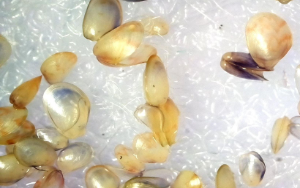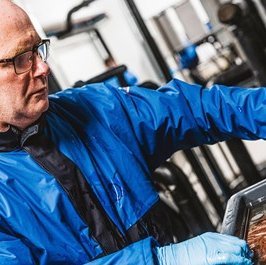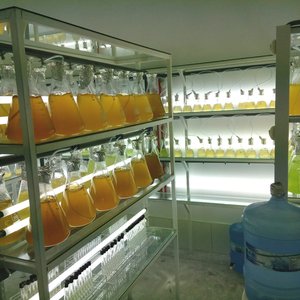A digital imaging platform may become a boost to New Zealand GreenshellTM Mussel industry as part of the solution to secure quality mussel spat supply, one of the biggest challenges facing New Zealand’s mussel growing industry.
According to Dave Taylor, technical director at Aquaculture New Zealand (AQNZ), “investing in innovation and technology is vital to unlocking further economic, social and environmental benefits from sustainable aquaculture”. The AQNZ GreenshellTM Mussel Spat Strategy 2019, identifies three focus areas to achieve industry production goals: securing and diversifying spat supplies, optimizing spat use and increasing hatchery production to increase spat retention, resilience and value.
A research project, which has just completed its first phase, may offer the solution. The project was funded by Seafood Innovations Limited, in partnership with Aquaculture New Zealand (AQNZ), Aquaculture Solutions Ltd (AquaSol) and imaging diagnostics platform developer, Techion. Project partner, Andrea Strang of AquaSol, said spat supply underpins the success of New Zealand’s GreenshellTM Mussel industry. “Research shows that if spat retention can be improved by one percent it would increase the amount of spat available by a staggering 20 percent.”
“We need a standardized system that can be used on the beach or farm vessels, as well as in the laboratory. A tool to assess mussel spat condition, size and number, then report those statistics immediately to allow farmers to make informed management decisions about which spat to take and how to care for it – will improve retention. Increasing spat retention by around five percent could be worth millions of dollars in exports,” said Strang.
Strang’s vision led her to New Zealand's agricultural parasitology company Techion, which commercialized FECPAKG2 to count and measure parasite eggs in animal feces. Techion founder and CEO, Greg Mirams said the recently completed first stage of the research project confirmed that the innovative smart digital imaging device known as the Micro-I can be adapted to analyze spat condition, size and number.
“Working in partnership with Andrea Strang and AQNZ, we’ve confirmed the Micro-I digital microscope can capture and present images enabling spat counts. Knowing this allows us to move onto the second phase of the project; developing protocols and using artificial intelligence (AI) to speciate and measure spat size and assess their health. All of this can be evaluated by analyzing images taken on the portable Micro-I which connects to the platform’s internet cloud for analysis,” Greg said.
Once the research is completed, Techion’s Micro-I will deliver spat assessments in real-time, on the beach, on board vessels or in the lab. Project partners are preparing to move to phase two of the research, which will develop the technology to pre-commercialization and incorporate the use of AI image analysis to assess spat quality and quantity.













